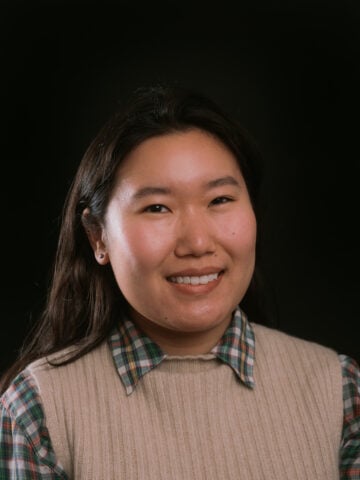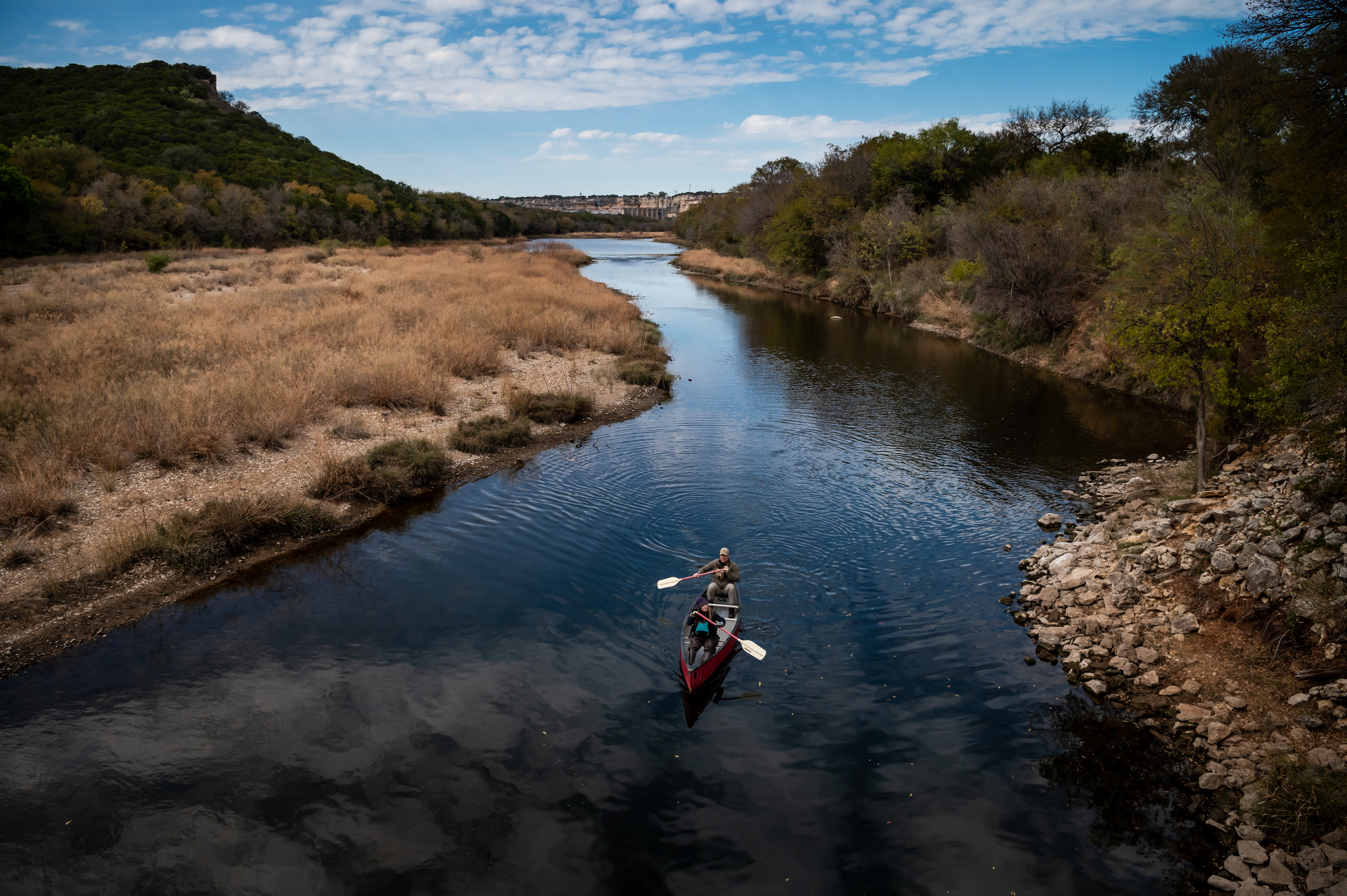
Diane Wilson on Fighting Plastic Pollution, Losing Everything, and Gaining Her Soul
The longtime Gulf Coast activist just won the prestigious Goldman Environmental Prize.

For three decades, Diane Wilson, a fourth-generation shrimper from Seadrift, has been trying to hold Formosa Plastics accountable for its pollution in Texas. Polyvinyl chloride powder from the plant dusted everything in town when she was young, and by the 1980s, more and more sick and mutated fish were showing up in locals’ catches. In 1989, Wilson learned Calhoun County had the most toxic pollution of any county nationally, according to EPA rankings.
What followed was a harrowing fight to clean up industry on the Gulf Coast and save her beloved Lavaca Bay, with a series of hunger strikes, arrests, legal action, and books (her first is titled An Unreasonable Woman.) Even as family and friends shunned Wilson for going against the county’s biggest employer, she persisted. Wilson became a staunch ally of the region’s Vietnamese fishermen, who in the early 1980s were targeted by the Ku Klux Klan for supposedly encroaching on white fishermen’s territory—when pollution was the real culprit behind dwindling commercial fisheries.
Finally, in 2019, Wilson was vindicated with a historic $50 million settlement from Formosa for its pervasive plastic nurdle pollution. Her victory was the largest-ever settlement won by a citizen from an industrial polluter under the federal Clean Water Act. Formosa has been ordered to cease discharging plastic nurdles in its wastewater, and clean up the plastic that’s accumulated over decades in Lavaca Bay, Matagorda Bay, and Cox’s Creek. Wilson donated the whole settlement to a trust, to be used for a variety of environmental causes.
Today, she is being recognized worldwide with the prestigious Goldman Environmental Prize. The Goldman Prize is the highest international award for grassroots environmentalism, akin to a Nobel Peace Prize. Each year, the Prize committee recognizes six activists from six continents. Wilson is North America’s 2023 winner.
Post-prize, she isn’t resting on her laurels. Wilson also wants to hold Formosa accountable in Vietnam, the ancestral home of so many of her fellow Gulf Coast fishers. She has helped organize a fishermen’s cooperative, to try and save the ailing oyster fishery. And she is fighting to stop Houston-based oil company Max Midstream from dredging up old mercury contamination in Lavaca Bay as part of a ship channel expansion.
The Observer spoke with Wilson about the Goldman Prize and about her work.

Diane, how did you feel when you learned you’ll be receiving the Goldman Prize?
Well, they repeatedly called and I wouldn’t answer the phone. They reached out to one of my lawyers and she called me and said, “Diane, answer your phone!”
That’s when I first heard it. And it really blew me away, because I have always heard of the prize. I remember when the Bhopal people from India won it, and it’s very prestigious, very international, and I was very, very amazed that they found me all the way down in this little county.
The award is for your work investigating Formosa and holding the company accountable for plastic nurdle pollution. When did you learn about Formosa’s pollution and how did you decide to focus on nurdles?
I started what you call my activism in 1989. I was working in Froggy’s Shrimp Company, and I had a shrimper throw me a newspaper article. It was on the front page—the first time the [EPA] Toxics Release Inventory ever became public. Industry had to report their air emissions, their water emissions, what they were putting in injection wells, what they were putting in landfills. And believe it or not, our tiny little county, Calhoun County, was number one in the nation.
So I did something really out of character, because I’m an introvert and I don’t consider myself a big speaker. I don’t consider myself a big crowd gatherer. But I called a meeting about Calhoun County being number one in the nation on toxic disposal. And it just so happened at that very time Formosa Plastics was expanding, from like 100 workers to probably over 3,000 workers and 400 contractors. It was the biggest expansion Texas ever had.
I had an anonymous person write me a letter, and inside it was a clipping of the public notice in the back of the newspaper [with] seven air permits that Formosa was trying to get. And so I included Formosa Plastics in my first meeting, and pretty much all hell broke loose. The county went into an uproar … I had bank presidents coming down the fish house. I had senators’ aides coming down, and everybody was telling me to not do it. That’s where it started.
“It’s on the banks, it was in the soil, it was in the vegetation. You would pull up vegetation and there were pellets embedded all in the roots. It was unbelievable.”
Wow. And then when did you start focusing on the plastic pellets, the nurdles?
Around 2012, I had a former worker from the plant who wanted to talk to me. I met him like 60 miles away because he was afraid of being seen or overheard. He really didn’t even trust me. Believe it or not, I met him in a beer joint called The Hideout. And that’s when he was telling me about the pellets that he had found, because he worked in the wastewater at Formosa.
What did this pollution look like? What did you see firsthand of its effects on the environment?
When we did the lawsuit, I got a lot of Formosa’s internal confidential documents. And I pretty much read through everything. I remember in one instance they had 167,000 pounds of pellets being discharged in one day. And every pound of pellets, it’s 22,000 pellets per pound. So you can imagine the volume of pellets. And Formosa has been doing this since 1994, almost 27 years, they have been doing this without ever reporting it to TCEQ [the Texas Commission on Environmental Quality].
I have probably over 8,000 photos and videos of all this plastic. It’s on the banks, it was in the soil, it was in the vegetation. You would pull up vegetation and there were pellets embedded all in the roots. It was unbelievable.
Have you seen a difference in the water in Lavaca Bay after the legal victory?
Well, if Formosa doesn’t follow through, we can take them to court. Which is real important, because you can have a settlement and if you don’t have the ability to enforce that settlement, it can go right out the window. So Formosa [was ordered to have] zero discharge of plastics. And we have monitoring as a part of our consent decree. We also have penalties. Since probably June 2021, on discharge into Lavaca Bay, Formosa has violated their permit 428 times and been penalized over $10 million [for] violations.
But in Cox’s Creek, where they have 10 stormwater outfalls, they are now doing probably $30 million in cleanup to get the pellets off the bank, out of the vegetation, and out of the water.
So there’s active cleanup going on.
Active clean up in Cox’s Creek. And we are probably going to start on the cleanup in Lavaca and Matagorda Bay—they’re doing the phase where they write it out and figure out what the parties are going to agree to. Because there’s over 200 landowners in the bay that have to be told about what is going on. And that was not much the case in the creek, because Formosa owned most of the land.
“Since probably June 2021, on discharge into Lavaca Bay, Formosa has violated their permit 428 times and been penalized over $10 million [for] violations.”
What is that going to take to clean up?
They have cranes out there, these huge cranes that are literally digging in some places. They have dug two feet on the bank and have literally scraped it from the beginning of the creek where it starts at Formosa’s property … I believe they said there was going to be 3,000 truckloads of this debris from the soil and the pellets that will be sent to a landfill. They’ve got to dredge out the vegetation, too, because it’s in the vegetation. And it’s never been done before. So we’re almost thinking it up as we go.
What is the settlement money from the lawsuit against Formosa being used for?
We put $20 million into a fishery sustainable cooperative. We put $10 million into a park. We put probably around $10 million into erosion on the beaches. We plugged another half million into giving kids that couldn’t afford camps, giving them ecological kids camp. We gave $1 million to Nurdle Patrol and we probably got $8 million that we are giving out to do all this research on the bay by scientists.
The cleanup, Formosa has to pay on its own.
What do you hope happens as a result of this recognition from the Goldman Prize?
That people can see across the United States and globally that you can make a plastic plant go zero discharge [into the environment]. All this extra plastic from manufacturing plants—that does not have to happen. I hope the story is elevated enough that it reaches the EPA and political leaders and that we get zero discharge of plastic. That’s where I’m going with it.
I recently read The Fishermen and the Dragon, which came out last year. You’re a big character in that book. Over the years, you had to sacrifice a lot—friends, family, at times your health (when you’ve gone on hunger strike), and you’ve been arrested lots of times. What has kept you going?
I’m a fourth-generation fisherwoman. My family has been around that bay 130 years. My earliest memories are the water and the fish houses and the boats and the fishermen. And so that is my identity. I mean, I have a very close bond with water. I have been on the back deck of a boat probably since I was eight years old.
And I think I’m a bit of a mystic and I feel the water is very alive. It has value on its own. It’s not a commodity and it’s like family. And it’s like every time I see a threat, I cannot let it go. I absolutely cannot let it go. And so I keep fighting every time I see a threat. And there’s always these threats against the water out there. Always.
Now that you’ve won this really important lawsuit, now that you’ve gotten this international recognition, is there anything that you would tell young Diane in the 1980s, who was just getting started?
Well, the funny thing is—and I think it’s mostly true for a lot of women, and especially women in the South—it’s hard to value yourself. I just find it very ironic that I can lose everything—I lost my house, I lost my boat, I lost my marriage, I lost many friends—and yet I have never liked myself better. And so I feel like you can lose it all and gain your soul. You really can.
This interview has been edited for length and clarity.



